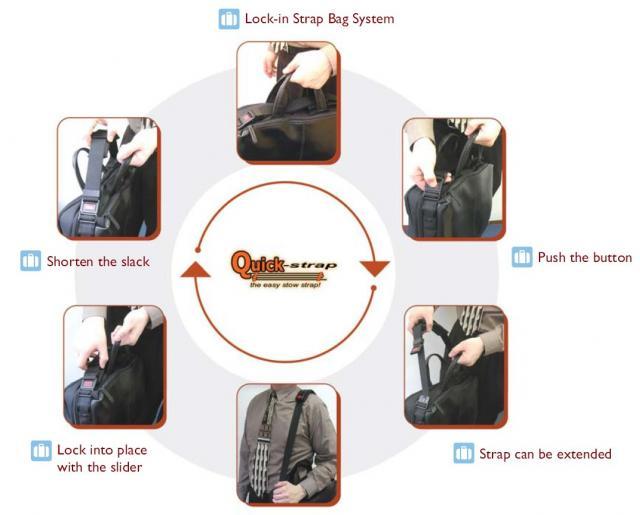The Father of Invention
By Joseph Greenberg
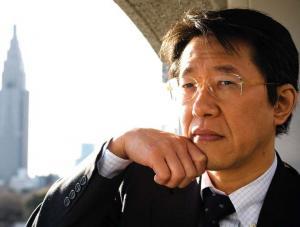 Kijuro Kawakita: inventor, entrepreneur, patent attorney -- Photography by David Coll Blanco
Kijuro Kawakita: inventor, entrepreneur, patent attorney -- Photography by David Coll Blanco
The business of invention
When Shuji Nakamura invented the blue ray laser diode, he never imagined that the technology would be used worldwide. Neither did he anticipate that it would be the center of so much controversy. Even before Blu–Ray went head to head against HD DVD in what is proving to be the VHS–Betamax battle of the 21st century, the inventor himself was engaged in a lawsuit with his employer, Nichia, to decide who was the actual owner of the patent. Nakamura ultimately settled for over US$8 million but his experience is a lesson to inventors that no matter how brilliant their invention, protecting their intellectual property (IP) is fundamental if they are to financially benefit from their creation. In this sense, if necessity is the mother of all invention, the patent is its father.
This is one of the examples that Kijuro Kawakita, patent attorney and inventor, tells his students when he visits schools and colleges to teach young entrepreneurs and inventors how to make inventions and protect any success they might have with them, “Many people have inventive capability but they don’t know about the patent system—it is vital for young people and inventors to protect their inventions otherwise they will never be able to compete with big companies.” Kawakita is evangelical about the benefits of thinking through the IP angles early on: “It’s important to think about ways in which the invention could be used in the future. I teach people how to make sure that they get a lawyer to broaden the patent so that it covers all future possibilities.” Many good inventions involve one simple mechanism or idea but the applications of this can be multiple and diverse. Nakamura’s blue ray technology has been used for traffic light signals as well as DVDs but it is all under the protection of the same patent—it is an example of a good, catch-all patent although this didn’t stop it being the cause of friction between the inventor and his employer.
Beyond merely protecting their ideas, Kawakita is also on a mission to inform inventors of how the patent they get can also form the backbone of their business. Inventors can actually turn themselves into a small sustainable business without Effectively, a bit of IP know-how can help inventors establish a profitable one-man show.needing to spend masses on marketing or take on lots of staff, if they then start trading licenses for selling their product. As Kawakita explains, “They can retain control of their invention, reap the financial rewards of its success, and not have to worry about taking on large amounts of staff or be obliged to go out and spend all of their time selling.” Once an inventor legally owns their invention, they are in a strong position—they are protected, and have the option to make money from licenses. Effectively, a bit of IP know-how can help inventors establish a profitable one-man show.
Moreover, Kawakita can point to the example of himself to show that this is realistic. Having always had a talent for engineering and invention, he has learned how to protect and market his own idea, make money from selling licenses and leave himself enough time to run his own patent office.
The Quick-Strap solution
Kawakita’s own invention is a simple device that he created as a result of his own observations. Watching commuters travelling on the train around Tokyo, he noticed that even the slickest and tidiest of them would often have the large shoulder strap of their cases or bags dangling on the floor—particularly when in a situation demanding they carry their baggage by the handles. Not only does this jar with an otherwise well-presented appearance, it is also unhygienic to have a long strap picking up dirt and worse from the floor, to be transferred to the shoulder later on.
To solve the problem, Kawakita invented a mechanism that allows those using a long shoulder strap to adjust the slack to a minimum and then attach it to the bag or case with a seatbelt-like fastening mechanism, (see below). The original version required users to tighten and fasten the strap with two hands but the modified version is closable using just one. This makes it good for people on the move as well. The mechanism received a silver medal at the Geneva Invention Exhibition and has been featured in the Japanese mainstream media such as the Asahi Shimbun as well in a number of industry publications.
The process to turning this idea into a business took the following steps that Kawakita sees as a good model for many similar inventions:
- Good idea
- Attain patent
- Establish a company
- Develop product on a small-scale
- Find distributors and sell the licences
Kawakita organized, drafted and filed his own patent application which protected the mechanism in all possible forms. It has already been adapted to fit a small strap for mobile phones, and one company has expressed an interest in manufacturing a much Kawakita organized, drafted and filed his own patent application which protected the mechanism in all possible forms.larger version for industrial use. He had the plastic adjuster made in China and the straps made by small assemblers in Japan. Kawakita has made a few sales through major retailers such as Tokyu Hands hardware stores— where it retails for ¥2,982—but his main revenue comes from the licenses. It was therefore a coup for him to have ACE, the largest Japanese bag manufacturer, purchase a license; they have increased production from 5,000 last year to a projected 10,000 this year—they sell mainly online and with revenue coming in from the license, Kawakita has nothing but minimal paperwork to do to maintain this business. “I am a patent attorney so I don’t have time to spend making sales and dealing with distribution, but because of my intellectual property arrangement, I am able to make a separate profitable business.” To take the business to the next stage of his master plan, Kawakita is actively looking for licensees in the US, China and Europe. In order to do so he is offering 20% of the royalties over 5 years to anyone who can arrange the license. Once the license is sold internationally he expects there to be a snowball effect as the invention gets more and more popular prompting more license sales, as well as potentially inspiring alternative applications.
The unity of invention and IP
 The DKL human detector
The DKL human detector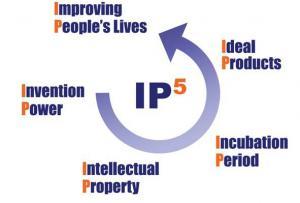
The company that Kawakita has set up to handle his QuickStrap is named IP5 as it expresses five ‘I’ and ‘P’ terms (see right) and he has now started to help some of his clients from his patent office establish similar businesses along his own model. One particularly interesting client of his manufactures a handheld human detector. In terms of the patent, this is potentially a very potent invention because of the breadth of use. The company, DKL, has made it possible for a human being to be 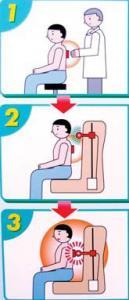 Dr Muramatsu’s therapeutic massage machinedetected within a 500-meter range as well as detecting respiratory and heart rates. The uses of this device range from security operations—at airports, borders, events—to medical monitoring of heart rates. It can also be used for safety purposes in the automotive and toy industries. DKL too is looking for international licensees so as it can focus on the research and development of other detection devices.
Dr Muramatsu’s therapeutic massage machinedetected within a 500-meter range as well as detecting respiratory and heart rates. The uses of this device range from security operations—at airports, borders, events—to medical monitoring of heart rates. It can also be used for safety purposes in the automotive and toy industries. DKL too is looking for international licensees so as it can focus on the research and development of other detection devices.
Another of Kawakita’s clients, Dr Muramatsu, has invented a therapeutic massage machine able to apply pressure to an out-of-place muscle or joint. The device works in three steps (shown right). Firstly, a medical doctor puts a reflective mark on the patient’s problem area. Secondly, when the patient sits on the machine, a detector senses the marked area. Thirdly, the press section moves to the marked area and applies pressure to the troubled spot. Patented in Japan, the US, China and Europe, Kawakita is convinced that Dr Muramatsu will be able to grow his business along his own lines once interested foreign parties buy licenses from him.
Kawakita is involved in both the patent application process as well as helping clients to find a license for their products just as he is doing with the Quick-Strap. His own personal experience of cunningly using patents to advance enterprise has clearly made him eager to spread the word, and this is why he goes to colleges and schools to let young people know about the importance of IP to their projects. Japan has the highest number of patent applications in the world and Kawakita’s case shows that putting patent applications at the center of a global business strategy has just as much as importance for the little guys as the big multinationals.
Kawakita and Associates
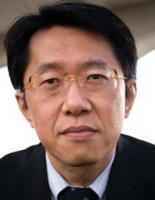 Kijuro Kawakita
Kijuro Kawakita
Kijuro Kawakita is a polymath: inventor, patent attorney, entrepreneur, teacher and businessman. He says that when he was young, he always enjoyed making things such as contraptions to help his fishing. It was thus only natural for him to go on to study engineering at the Tokyo Institute of Technology and, upon graduating, land a job as an engineer for Honda. However, after a couple of years he decided he wanted to end up running his own business and believed his technical expertise could allow him to become a successful patent attorney. Shortly after qualifying, he set up his own firm, Kawakita and Associates. He is also inventor of the Quick-Strap baggage carrier which he patented himself; given his day job, it is no surprise that the application for the patent for his inventions went “very smoothly.”
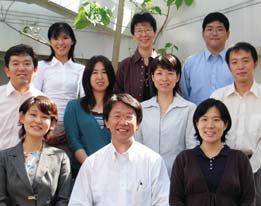 Kawakita and Associates
Kawakita and Associates
Kawakita and Associates is an international patent law firm established by Kijuro Kawakita specializing in ‘invention consultancy.’ It is the only law firm to participate in the Tokyo Patent Distribution Fair, and has done so since 2003.
Contact details
Kijuro Kawakita
5F YKB Mike Garden
5-4 Shinjuku 1-chome
Shinjuku-ku
Tokyo 160-0022
Tel: +81-3-5362-3180
Fax: +81-3-3341-6103
Email: qza05253@nifty.com
Web: www.kawakita-pat.com


